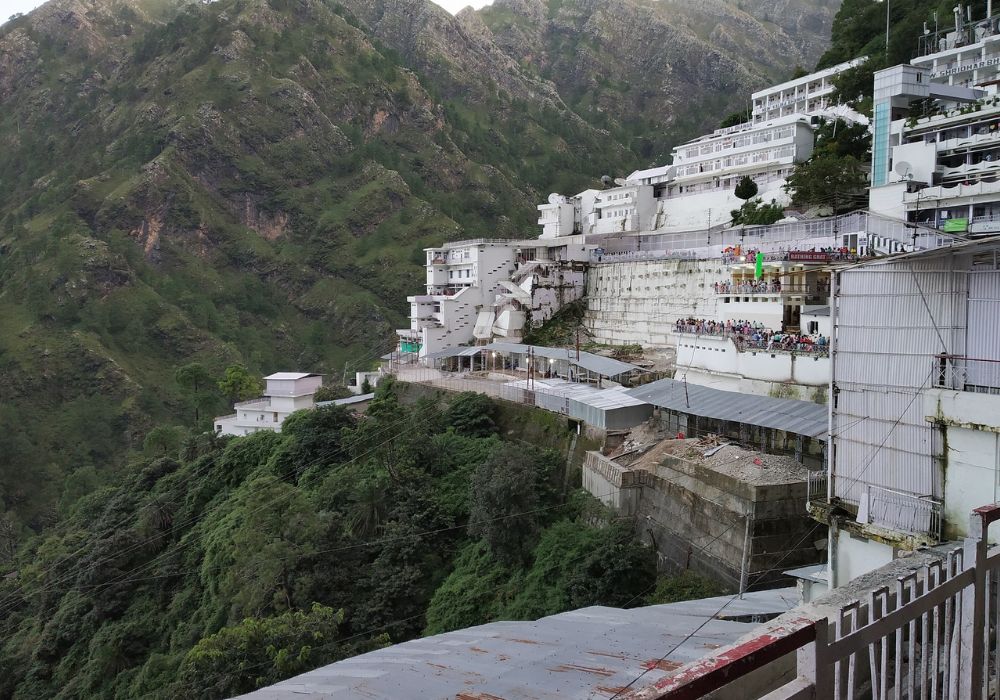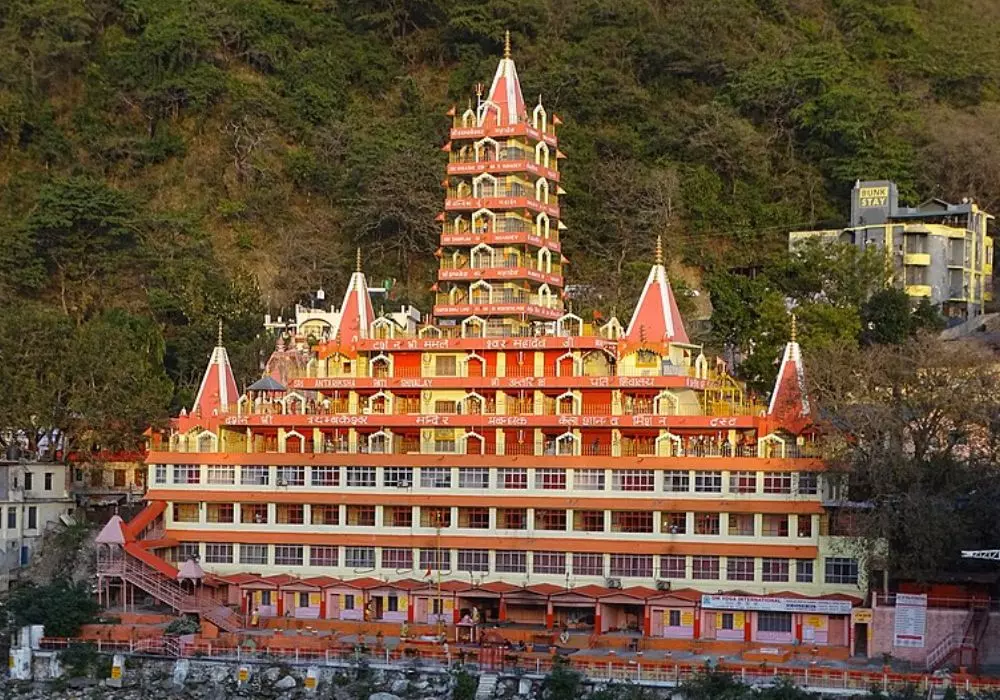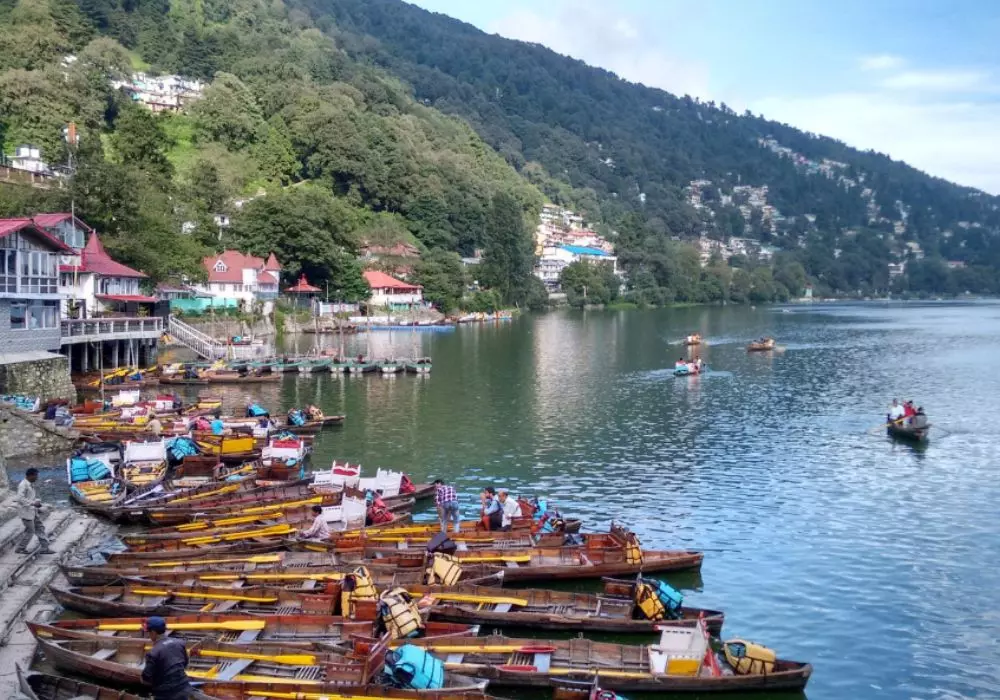The Vaishno Devi Temple, situated in the scenic Trikuta Mountains of Jammu and Kashmir, stands as a beacon of faith and spirituality, drawing pilgrims from far and wide. This sacred Hindu temple is dedicated to Mata Vaishno Devi, a manifestation of the Mother Goddess.
Revered for her benevolence and power, Mata Vaishno Devi is believed to fulfill the wishes of her devotees who undertake the arduous journey to seek her blessings. The temple’s popularity lies not only in its religious significance but also in the captivating natural beauty that surrounds it.
The trek to the temple, often undertaken on foot, is a test of faith and endurance, offering breathtaking views of the mountains and valleys along the way.
For centuries, Vaishno Devi Temple has been a symbol of unwavering devotion, attracting pilgrims who come seeking solace, guidance, and divine intervention. It remains a place where the spiritual and the natural worlds intertwine, offering a unique and unforgettable experience to all who visit.
History and Legend
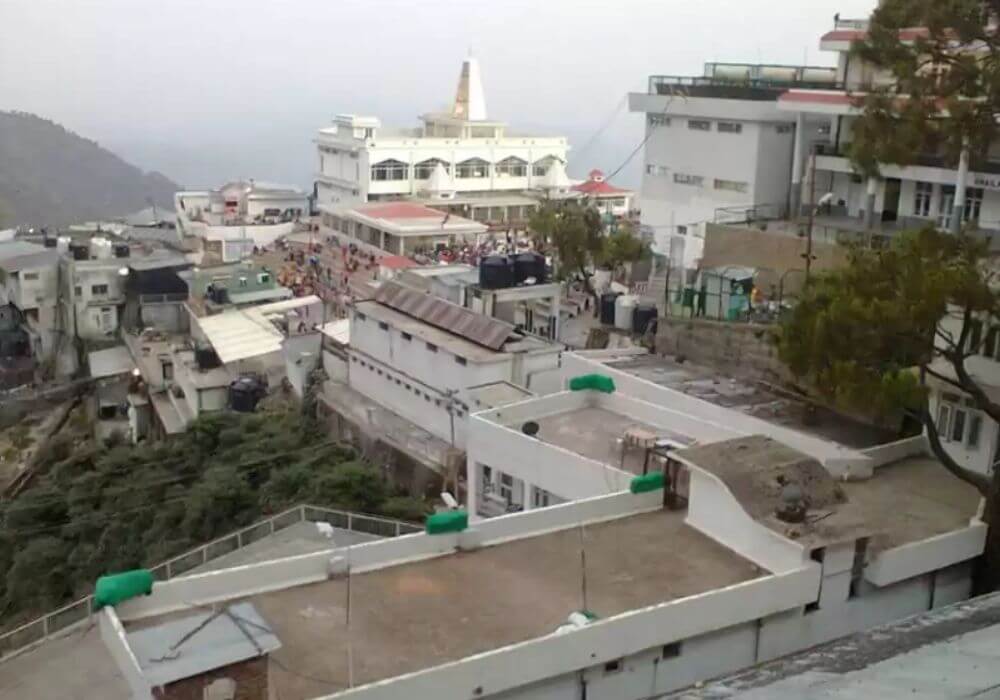

The history of the Vaishno Devi Temple is deeply rooted in ancient times, with its origins shrouded in the mists of time. According to historical records, the temple has been a site of pilgrimage for centuries, drawing devotees from all corners of the country.
Legend has it that Mata Vaishno Devi, also known as Trikuta, was born as a manifestation of the divine Mother Goddess. She took birth in the southern part of India and later moved to the northern region, where she resided in a cave in the Trikuta Mountains.
It is said that Mata Vaishno Devi spent years in meditation and penance, ultimately attaining the status of a deity. The shrine of Mata Vaishno Devi holds immense significance for devotees, who believe that a pilgrimage to the temple can fulfill their wishes and bring them closer to the divine.
The journey to the temple is seen as a symbolic one, representing the hardships and trials of life that one must endure to attain spiritual enlightenment.
Architecture and Design
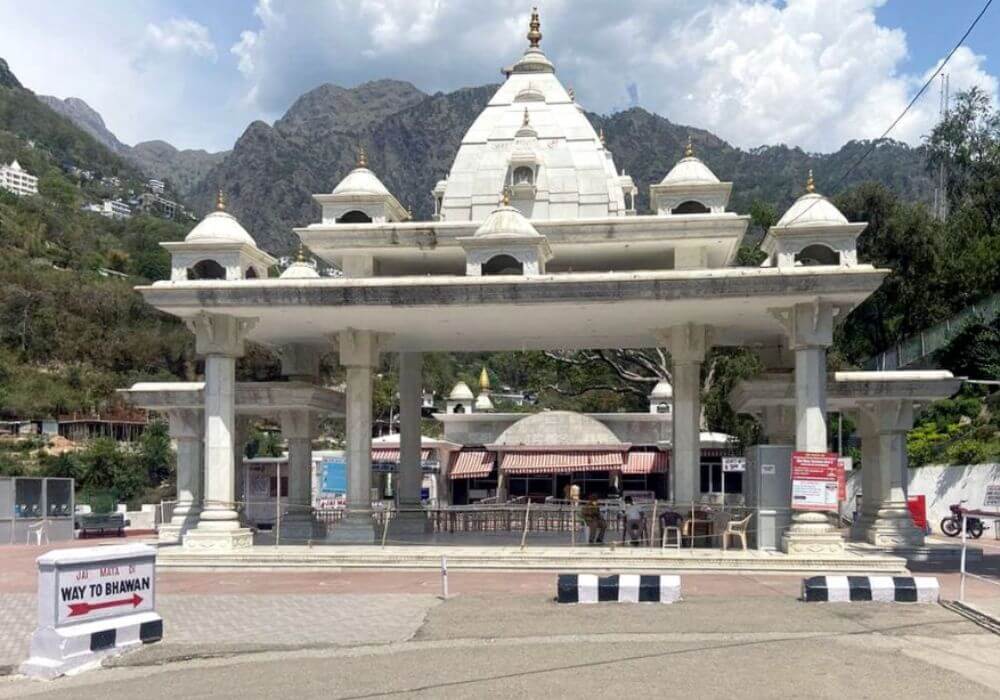

The architecture of the Vaishno Devi Temple is a harmonious blend of natural beauty and human ingenuity. The main Bhawan, where the sanctum sanctorum is located, is a modest yet spiritually powerful structure nestled in the Trikuta Mountains of Jammu and Kashmir. The Bhawan is constructed with a simple yet elegant design, reflecting the humility and devotion of its devotees.
Surrounding the main Bhawan are various structures that serve both functional and spiritual purposes. These include prayer halls, accommodation facilities for pilgrims, and administrative buildings. The design of these structures is practical yet aesthetically pleasing, with a focus on providing a serene and peaceful environment for worship and contemplation.
One of the most remarkable features of the Vaishno Devi Temple complex is the presence of natural caves. These caves, known as the Garbh Joon, Surya Joon, and Chandra Joon, are believed to be the abodes of the three goddesses – Maha Kali, Maha Lakshmi, and Maha Saraswati – who are worshipped as manifestations of Mata Vaishno Devi. The natural caves add to the mystical aura of the temple complex, attracting devotees and tourists alike.
Main Deity Of Vaishno Devi Temple
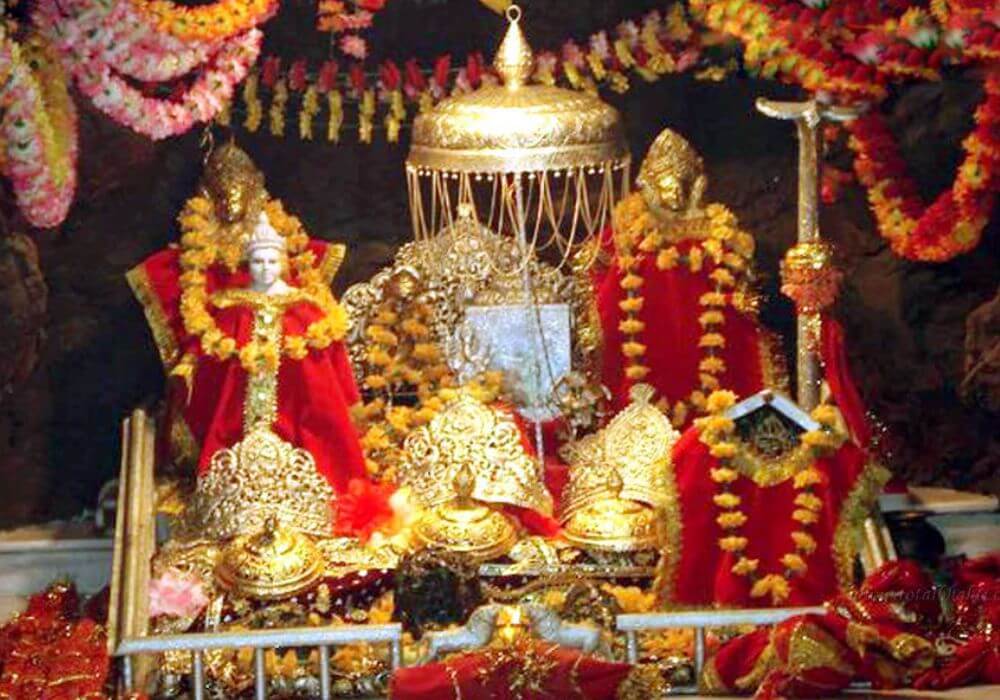

Mata Vaishno Devi, also known as Mata Rani, Vaishnavi, or Trikuta, is the presiding deity of the Vaishno Devi Temple. She is revered as a manifestation of the Hindu goddess Durga and is worshipped by millions of devotees as the Mother Goddess or Divine Mother.
The worship of Mata Vaishno Devi is deeply rooted in the traditions and beliefs of Hinduism. Devotees undertake a rigorous pilgrimage to reach the temple, often walking long distances through the mountains as a symbol of their devotion and faith.
Many pilgrims also perform various rituals and offer prayers to the goddess, seeking her blessings for health, prosperity, and protection. One of the most important rituals associated with the worship of Mata Vaishno Devi is the darshan, or the act of seeing the deity.
Devotees believe that by having the darshan of Mata Vaishno Devi, their wishes will be fulfilled and their sins will be washed away.
Another significant tradition associated with the worship of Mata Vaishno Devi is the offering of prasad, or sacred food, to the goddess. Devotees offer a variety of items as prasad, including fruits, sweets, and other vegetarian dishes, as a symbol of their gratitude and devotion.
Pilgrimage Route
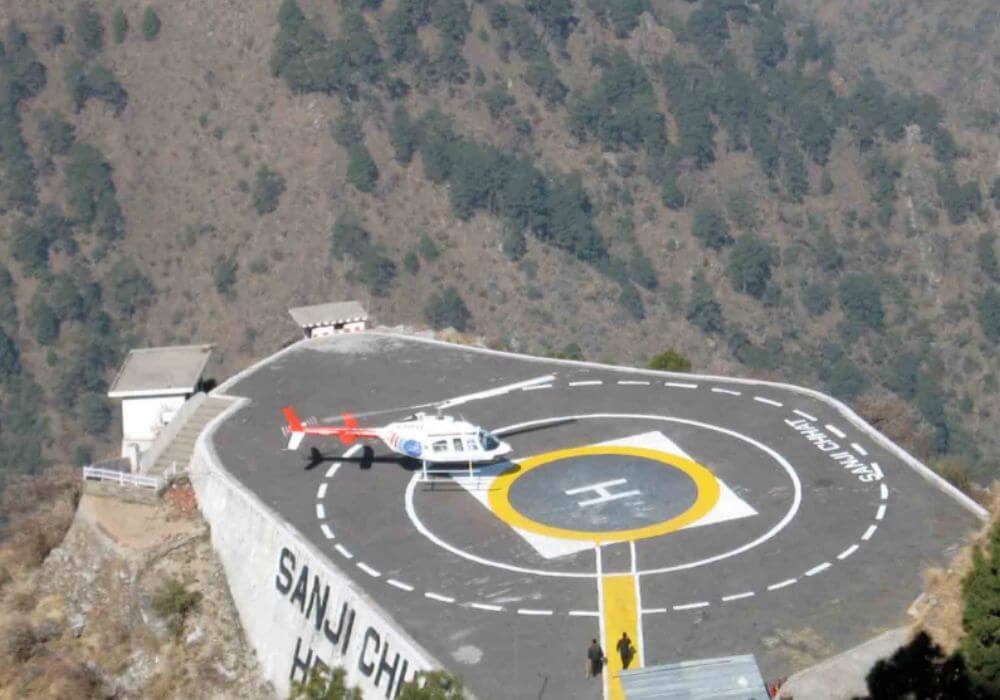

The pilgrimage to the Vaishno Devi Temple offers multiple routes for devotees to reach the sacred shrine, with the most traditional and popular being the trekking route from Katra.
This journey begins at the base camp in Katra, where pilgrims start their ascent to the temple atop the Trikuta Mountains. The trek covers a distance of approximately 13 kilometers and passes through picturesque mountain trails, offering breathtaking views of the surrounding landscape.
Along the trekking route, pilgrims will find several facilities and accommodations to cater to their needs. These include rest houses, eateries, and medical facilities, providing pilgrims with a comfortable and safe journey. Additionally, facilities for ponies and palanquins are also available for those who may find the trek challenging.
For those seeking a more leisurely journey, helicopter services are available from Katra to Sanjichhat, located near the temple. From Sanjichhat, pilgrims can easily reach the temple by foot or by ponies.
Cultural Significance
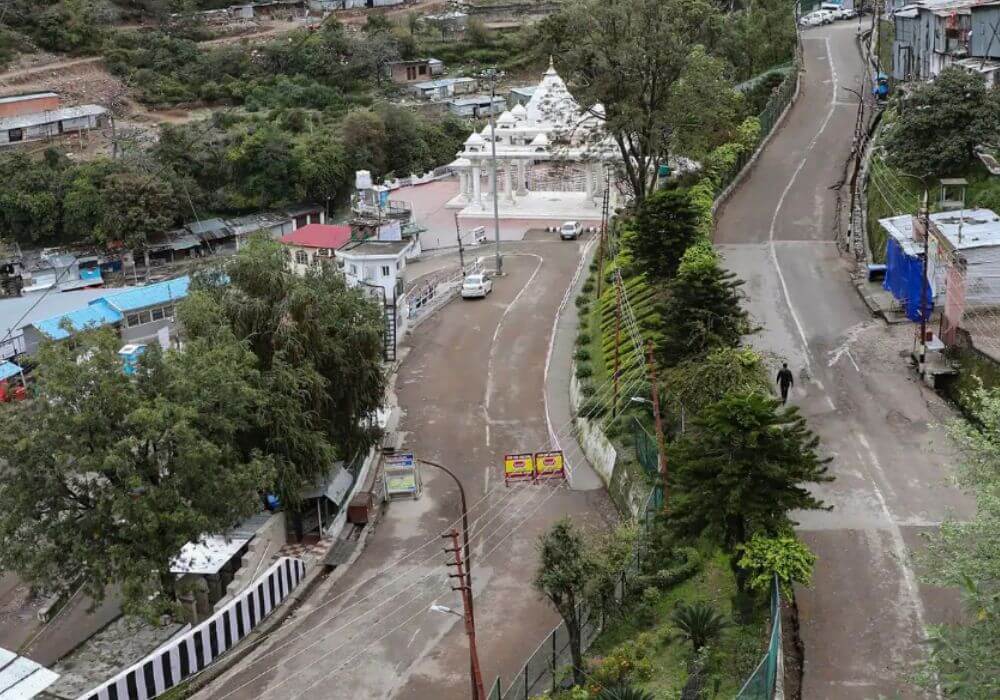

The Vaishno Devi Temple holds immense cultural significance in Hindu mythology and spirituality. It is believed to be the abode of Goddess Vaishno Devi, a manifestation of the Mother Goddess. The temple is considered a sacred site for Hindus, who visit it to seek the blessings of the Goddess and fulfill their wishes.
The temple is also renowned for its festivals and celebrations, which are an integral part of its cultural significance. The Navaratri festival, celebrated twice a year, is particularly important, as it marks the nine-day worship of the Goddess. During this time, the temple is adorned with lights and decorations, and devotees from far and wide come to offer their prayers.
Another significant festival celebrated at the temple is the Vaishno Devi Jayanti, which marks the anniversary of the Goddess’s appearance on Earth. This festival is celebrated with great fervor and devotion, with special prayers and rituals conducted at the temple.
Visitor Information
For those planning a visit to the Vaishno Devi Temple, here’s some practical information to help you prepare for your pilgrimage:
Timings: The temple is open for darshan throughout the year. However, the timings may vary, so it’s advisable to check the official website or local authorities for the current schedule.
Entry Fees: There is no entry fee to visit the temple. However, there are charges for various facilities and services, such as accommodation and transportation.
Accommodation Options: There are several accommodation options available for pilgrims near the temple. These range from budget-friendly guesthouses to luxury hotels. It’s advisable to book your accommodation in advance, especially during peak seasons, to avoid any inconvenience.
Tips for Pilgrims:
- Wear comfortable clothing and footwear, as you may need to walk long distances during your pilgrimage.
- Carry sufficient water and snacks, as the trekking route can be tiring.
- Follow the instructions of the temple authorities and security personnel for a safe and peaceful pilgrimage experience.
- Respect the sanctity of the temple and its surroundings. Avoid littering and maintain cleanliness.
- Seek medical help if you experience any health issues during your pilgrimage.
By following these tips and being prepared, you can have a safe and fulfilling pilgrimage experience to the Vaishno Devi Temple.
Conservation Efforts
Vaishno Devi Temple authorities and local organizations have been actively involved in conservation efforts to preserve the natural environment around the temple and manage the large influx of pilgrims in an eco-friendly manner. Some of the key initiatives include:
- Waste Management: Various waste management programs have been implemented to ensure proper disposal of waste generated by pilgrims. This includes the segregation of waste and recycling efforts to minimize the impact on the environment.
- Reforestation: Efforts have been made to promote reforestation in the surrounding areas to maintain the ecological balance. Planting of native species helps in restoring the natural habitat and biodiversity.
- Energy Conservation: The temple has implemented various energy conservation measures, such as the use of solar energy for lighting and heating purposes. This reduces the dependency on non-renewable energy sources and lowers the carbon footprint.
- Eco-Friendly Practices: Pilgrims are encouraged to adopt eco-friendly practices, such as using biodegradable products and minimizing plastic usage. Awareness campaigns are conducted to educate pilgrims about the importance of environmental conservation.
- Water Conservation: Measures have been taken to conserve water, including rainwater harvesting and efficient water management practices. This ensures the sustainable use of water resources in the region.
These conservation efforts aim to preserve the natural beauty and ecological balance around the Vaishno Devi Temple, ensuring that future generations can also experience the spiritual and natural wonders of this sacred place.
Conclusion
The Vaishno Devi Temple stands as a beacon of spiritual and cultural significance, drawing devotees from far and wide to seek the blessings of Mata Vaishno Devi. Its rich history, stunning architecture, and breathtaking natural surroundings make it a place of profound reverence and beauty.
As pilgrims embark on the journey to this sacred temple, they are not just seeking the blessings of the divine Mother, but also experiencing a profound spiritual journey. The pilgrimage route, though challenging, is filled with the spirit of devotion and determination, making it a transformative experience for many.
Amidst the natural beauty of the Trikuta Mountains, the temple stands as a testament to faith and devotion. The conservation efforts around the temple ensure that future generations can also experience the divine aura of this sacred place.
